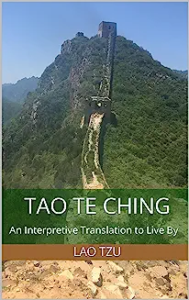 In 2023, Awakening Together’s founder, Regina Dawn Akers, translated the Tao Te Ching from ancient Chinese into modern English. In this video series, Regina shares:
In 2023, Awakening Together’s founder, Regina Dawn Akers, translated the Tao Te Ching from ancient Chinese into modern English. In this video series, Regina shares:
~ What she found in the Chinese characters used by Lao Tzu
~ Why she translated each chapter the way she did
~ The important messages found in the Tao Te Ching
Summary of the First Two Chapters of the Tao Te Ching
The Tao is everything, but don’t expect to know the Tao in the same way you know other things. The Tao isn’t perceived like other things are perceived. You can’t understand it like you can understand other things.
The Tao can also be called the Way. Those are good and useful names, but no name is real. No name is the essence of the thing that is named.
The Tao, which can’t be perceived, understood, or named, is the source of the universe, but the universe is not a universe of things. It is one verse, one composition. It is the Tao. Once we start giving names, the one composition begins to look like many different and separate things.
What leads us to name, define, and divide the composition of the Tao into many things? It’s the desire to see and know more than the Tao, to fulfill some idea of lack, to have something beyond what is here and now. If we can let go of that desire and be satisfied with what is, with the composition as it is, we will see the Tao. If not, we remain with the vision of many things.
In truth, there aren’t many things. There is only the Tao. This truth feels like a mystery. How can many things be only one thing? Yet, if you step into that mystery and go deep into that mystery, you will discover the Tao.
The Tao is beauty. When you see only the Tao, you see only beauty. Yet, as soon as we start naming it “beauty”, we somehow create its opposite, ugly. That is the beginning of division. That is the beginning of problems.
The Tao is goodness. When you see only the Tao, you see only goodness. Yet, as soon as we start calling it “good”, we create its opposite, bad. That is duality. With duality, one thing needs its opposite, so if good exists, bad must exist too. This is why there is evil in our world.
Once we say life is easy, we discover it can be difficult too. That’s duality. And once we step into duality, duality multiplies. Long and short appear. Above and below appear. Etcetera.
The tone of duality spreads as its song is sung throughout humankind. By following one another, we become so confused that we think duality is reality. We think duality is the truth of how things are.
And then the sage appears to demonstrate that something else is true. The sage demonstrates the truth of the Tao, the truth of one.
One way the sage does this is through not controlling things. You see, if there is good and bad, things must be controlled so we can avoid bad and receive only good, but if there is only the Tao, nothing needs to be controlled.
The truth of the Tao can’t be learned intellectually, so the sage doesn’t try to teach it to us that way. Instead, the sage teaches through being. For example, as life happens, the sage simply flows with it accepting what comes when it comes and letting it go when it goes. When we see that the sage is genuinely content with whatever arises, we begin to see something that is different from duality. We begin to see that through the sage, and we become curious about what we are beginning to see.
In this way, the sage gives birth to our awakening, our awakening to the Tao, but the sage does not try to own that, take control of that, or have power over us in any way. The sage simply continues to be the sage, the one who is in touch with the Tao.
The sage does whatever it is that needs to be done but doesn’t expect anything from what’s accomplished. One who loves the mystery of the Tao does not put expectations upon it. Without intention, everything the sage does is a service, because we intuitively sense the Tao through everything the sage does. It’s not actually what the sage does that teaches us, for even the sage knows these accomplishments are meaningless; it is the way the sage is that consistently continues to teach. That way of being is a physical representation of the Tao. Since the sage’s way of being represents what is eternal, the vibration of what the sage does lasts eternally.